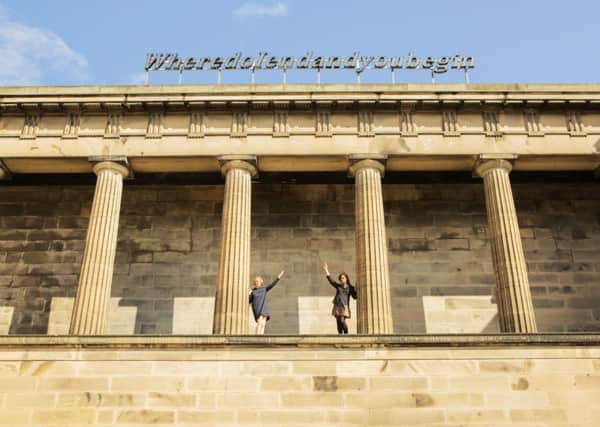Royal High School set for Festival revival


The former Royal High School, on Calton Hill, is being opened to the public for the first time in almost two decades after being taken over by the Edinburgh Art Festival.
Two Indian artists have been given special permission to install large-scale works of art at the A-listed property, which has been lying empty since the late 1960s.
Advertisement
Hide AdTheir show is thought to be the first time the building has been opened to the public since 1998, when arts impresario Richard Demarco joined forces with the European Youth Parliament to stage a programme of performances and masterclasses.
This year’s festival may be the last chance for anyone to see the proposed debating hall for the parliament, which remains largely intact, before the building is converted into a proposed hotel in the next few years.
The main chamber, where a large-scale film installation will be showing throughout the festival, was refurbished in the 1970s with the intention of housing the proposed devolved Scottish Assembly, which was scuppered in the 1979 referendum which failed to drum up the required level of public support.
Another large-scale neon work of art has been erected on the front of the building, which will allow it to be seen clearly from the Old Town.
Amar Kanwar’s show at the old Royal High School - which is staged in three different spaces - explores the impact that mining and other commercial activities have had on the landscape and communities of Odisha in India, showing what the area looked life before and after its acquisition.
Edinburgh Art Festival director Sorcha Carey: “We wanted to present Amar’s project as part of our bigger exhibition, ‘Where do I end and you begin?’, which is inspired by the neon work by Shilpa Gupta, which has been installed on the front of the building.
Advertisement
Hide Ad“The main exhibition, which features work from artists from five points across the Commonwealth, is on at the City Art Centre, but we knew we needed a lot of space for this project as it is a large-scale work which needs several rooms.
“The art festival has always had a real interest in making buildings that are normally closed to the public accessible. We thought about the possibility of using this building from a pragmatic perspective, but we also really wanted a location for that work that could make it really meaningful in a Scottish context, because it is all about democracy and citizenship.
Advertisement
Hide Ad“It was an amazing opportunity to use that building. There was a lot of negotiation with the council, but we have a good relationship with them because of our track record of opening things. It has been so rare that the public has had access to that building, especially since 1979, and it will be a very different place when the developers go on site.
“The whole project is about a violent struggle between communities and the state authorities, who have been selling off land to mining and multinational companies. It is about how the local way of life and livelihoods have been completely decimated. Part of the work is a room which has an archive of examples of around 200 indigenous seeds that have died out in the area.”
The forthcoming independence debate has also sparked plans for an elaborate celebration to mark the independence referendum - but only in the event of a yes vote.
English artist Ellie Harrison, who is currently based in Glasgow, has installed four large confetti cannons, which will be detonated during an all-night party if Scotland votes to separate from England.
The firing of the red, white and blue confetti, which has already been bagged up in preparation for the event, will be screened live on the internet as part of Harrison’s project “After the revolution, who will clean up the mess?”
Ms Harrison, who was born in Ealing and has lived in Glasgow for the last six years, said she would “probably” be voting yes in the referendum, but insisted the work did not reflect a political viewpoint.
Advertisement
Hide AdShe added: “It is meant to be apolitical. I have tried to capture the atmosphere of uncertainty and anticipation at the moment, not just in Scotland, but across the UK. If Scotland votes for independence there is going to be a big bang with consequences.”
The art festival has also won permission from the city council to close off The Mound on Monday 4 August, the 100th anniversary of the start of the First World War, for a one-off outdoor screening of a video installation by another Indian artist, Nalini Malani, which features her own interpretation of the violence and grief of war.
The Edinburgh Art Festival runs from 31 July to 31 August.
SEE ALSO